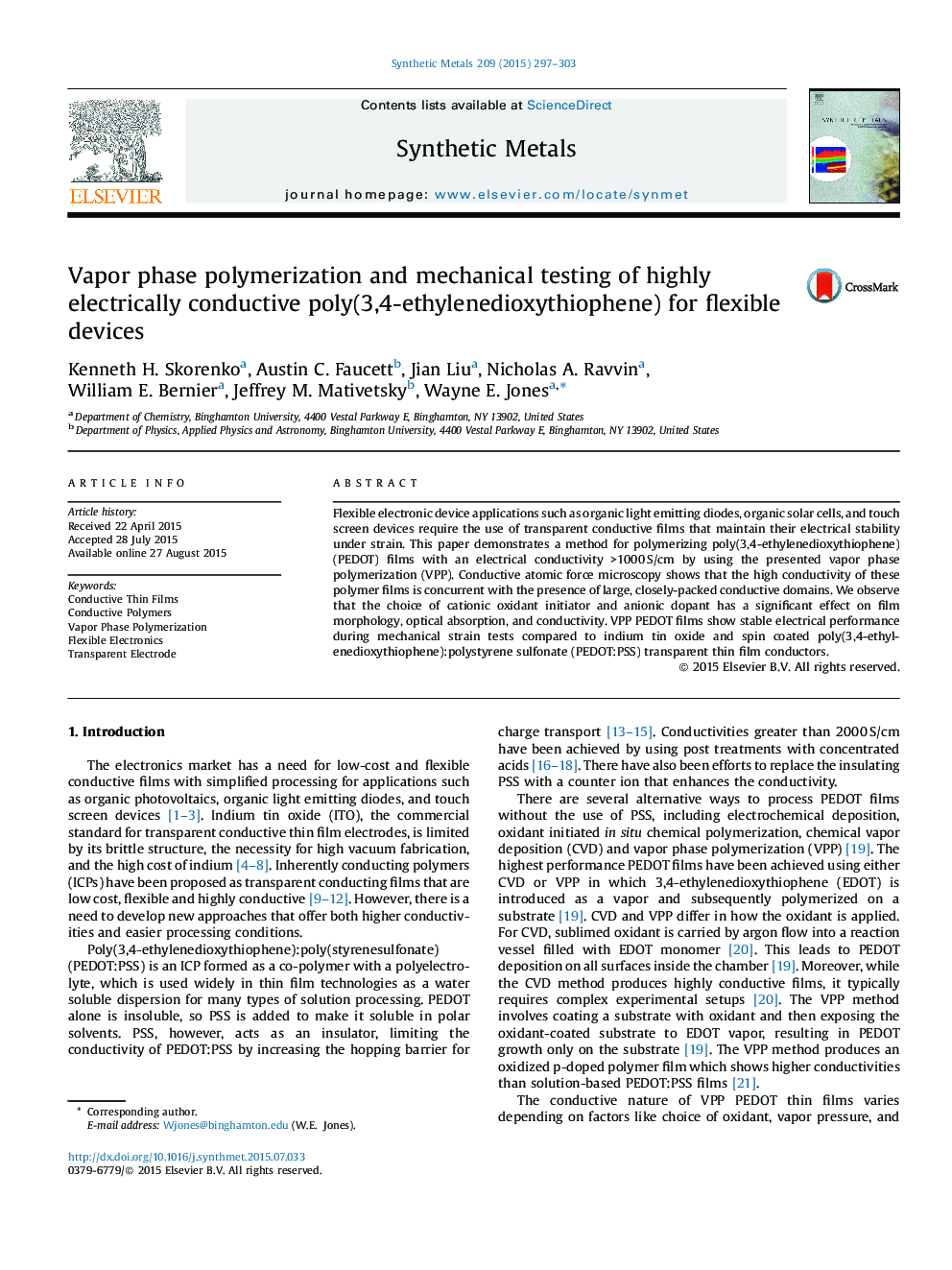| Article ID | Journal | Published Year | Pages | File Type |
|---|---|---|---|---|
| 1440506 | Synthetic Metals | 2015 | 7 Pages |
•Conductive PEDOT has been synthesized using vapor phase polymerization, this is repeatable and yields conductivities >1000 S/cm.•Optical spectroscopy shows that the vapor phase polymerized PEDOT is doped and is in a bipolaron state.•Conductive atomic force microscopy clearly shows conductive domains which demonstrate the high conductivity measured.•Tension stress testing shows that the PEDOT can maintain its highly conductive nature during bending.
Flexible electronic device applications such as organic light emitting diodes, organic solar cells, and touch screen devices require the use of transparent conductive films that maintain their electrical stability under strain. This paper demonstrates a method for polymerizing poly(3,4-ethylenedioxythiophene) (PEDOT) films with an electrical conductivity >1000 S/cm by using the presented vapor phase polymerization (VPP). Conductive atomic force microscopy shows that the high conductivity of these polymer films is concurrent with the presence of large, closely-packed conductive domains. We observe that the choice of cationic oxidant initiator and anionic dopant has a significant effect on film morphology, optical absorption, and conductivity. VPP PEDOT films show stable electrical performance during mechanical strain tests compared to indium tin oxide and spin coated poly(3,4-ethylenedioxythiophene):polystyrene sulfonate (PEDOT:PSS) transparent thin film conductors.
